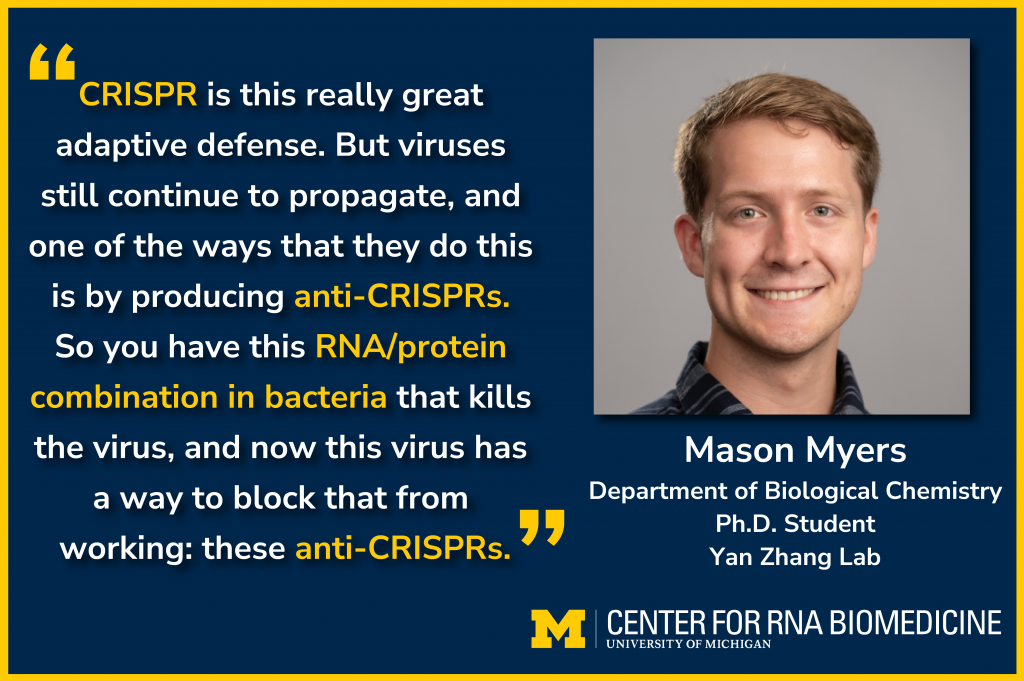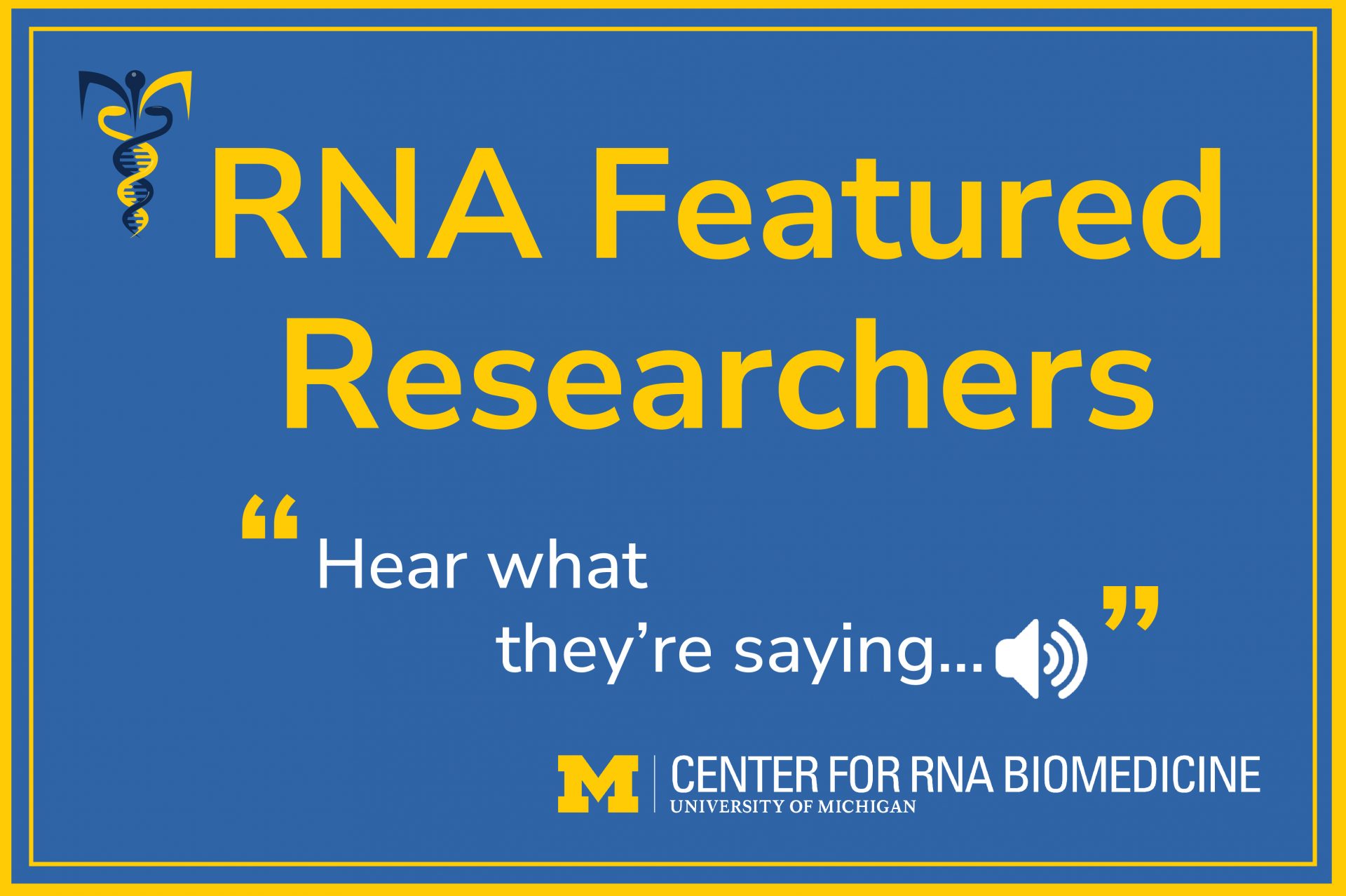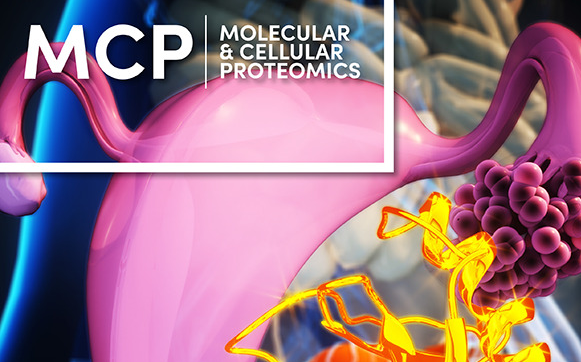RNA Featured Researcher – Mason Myers

Mason Myers
Ph.D. Student
Department of Biological Chemistry, University of Michigan
Medical School
About Mason
Mason Myers is the Nick Fury of the science world. A combination investigator, mediator, orchestrator, instigator, and peacemaker between two warring factions: bacteria, (Iron Man and fellow Avengers) and viruses, (Thanos and his thugs.) But it was another pop culture icon that first ignited Mason’s passion for science: Scooby-Doo.
Mason is just wrapping up his third year as a Biological Chemistry Ph.D. student in the Yan Zhang Lab. And what a year it’s been. In January, Mason was co-lead author on the paper, Exploiting activation and inactivation mechanisms in type I-C CRISPR-Cas3 for genome-editing applications, published in Molecular Cell, a marked achievement for any Ph.D. candidate but particularly impressive for one of his tenure – it happens, but not with all that much regularity.
In the joint study with Cornell University, Mason, fellow co-lead author Chunyi Hu, Ph.D., a postdoctoral student in the lab of Dr. Ailong Ke, and their teams investigated Type 1 CRISPR (CRISPR-Cas3) off-switches. These small protein inhibitors, or anti-CRISPRs, represent a major step toward safer human genome engineering and reducing unwanted off-target effects.
What was the focus of the study and what are your current research interests?
“CRISPR is bacteria’s defense system, but viruses have found a way to thwart this forcefield by employing different ‘anti-CRISPRs,’ or Arcs, that block CRISPR, providing an unencumbered pathway in for the sneaky invader. There are now over 100 families of Acrs, but we studied two that work against our model species. We’re trying to understand how these anti-CRISPRs work and apply that knowledge to gene editing.
Currently, CRISPR is used to find and ‘cut’ portions of DNA – think of it as an ‘on’ switch for immunity. Anti-CRISPRs are ‘off’ switches, and can play a much more nuanced role in increasing the specificity of gene editing. We can fine-tune where we’re making edits, the time window in which editing can occur, and we can expand into turning genes up to a higher level or turning them down. It’s an important addition to our toolbox.
What really helped develop this article into an exciting discovery and technology story was the excellent collaboration between us and the Ke Lab at Cornell University. We could sort of play off of each other – my research informing what Chunyi was doing and vice versa – and how we could wrap that into a good set of figures that tells a great story about how bacteria and viruses fight each other. An arms race on a microscopic scale.”
Who/what introduced you to science?
“There are three tiers to this: Scooby-Doo, high school biology class, and junior year internship. When I was five years old, I saw this Scooby-Doo movie where the characters were inside some sort of mad scientist’s lab. I remember thinking the whole concept of being in a lab – trying new things, answering questions, even wearing a lab coat – was pretty cool. Then studying DNA in sophomore biology class flipped a switch for me. It’s life at that very base level, the interface between biology and chemistry. The next year I got an internship at a local biotech startup involved in molecular cloning. I mostly cleaned equipment, but a few times I performed some actual research with genetic manipulations and E. coli, to see in a gel if a DNA molecule actually made its way in. That’s when I said to myself, ‘I think this research thing I can keep going with.’”
Who/what brought you to U-M and to the Yan Zhang Lab?
“I applied to several graduate schools all over the country. I liked many of them, but what stood out to me about Michigan was the collaborative nature of the environment, and how excited not only the students were but also the faculty about completing groundbreaking research in a manner that was not competitive but cooperative. Also, my fiance got into a master’s program at U-M so the stars were all aligned.
My first-year lab rotations took me to Nils Walter’s, Sarah Keane’s, and Chase Weidmann’s labs, and then Yan’s lab and that’s where the whole thing really came together. I could see the journey from basic science to the clinic, and that’s what really inspired me about her work and why I signed on with her lab. Just as important, she’s also a wonderful and motivating mentor.”
If you weren’t a scientist, what would you be?
“If I wasn’t a scientist I would be a barista at a coffee shop slash bookstore. I used to work in one and I really liked it, and in some ways it involves several aspects of my current work that I really enjoy – following SOPs, preparing products and presenting them to people. Plus, I love the smell of coffee!”


